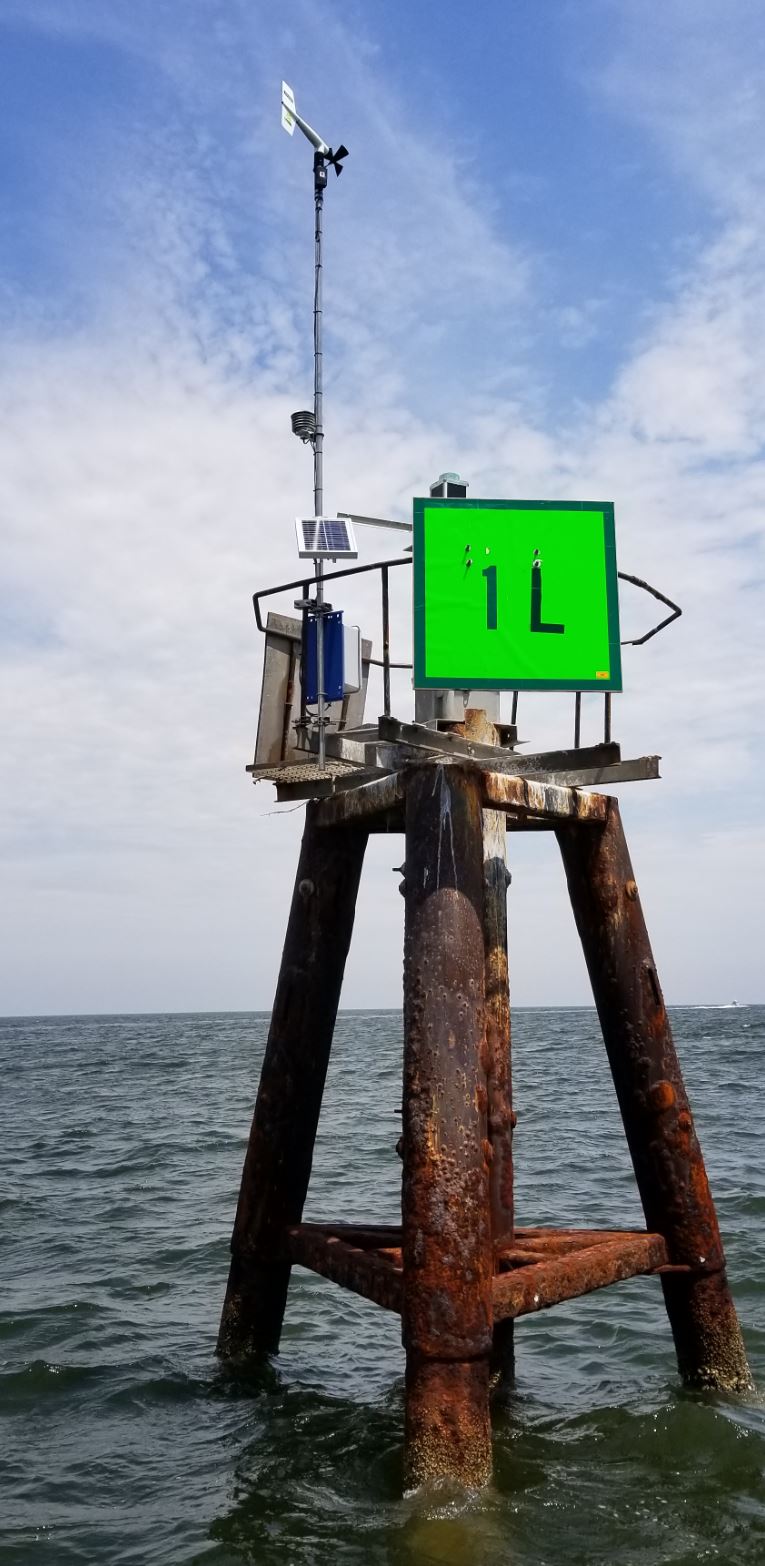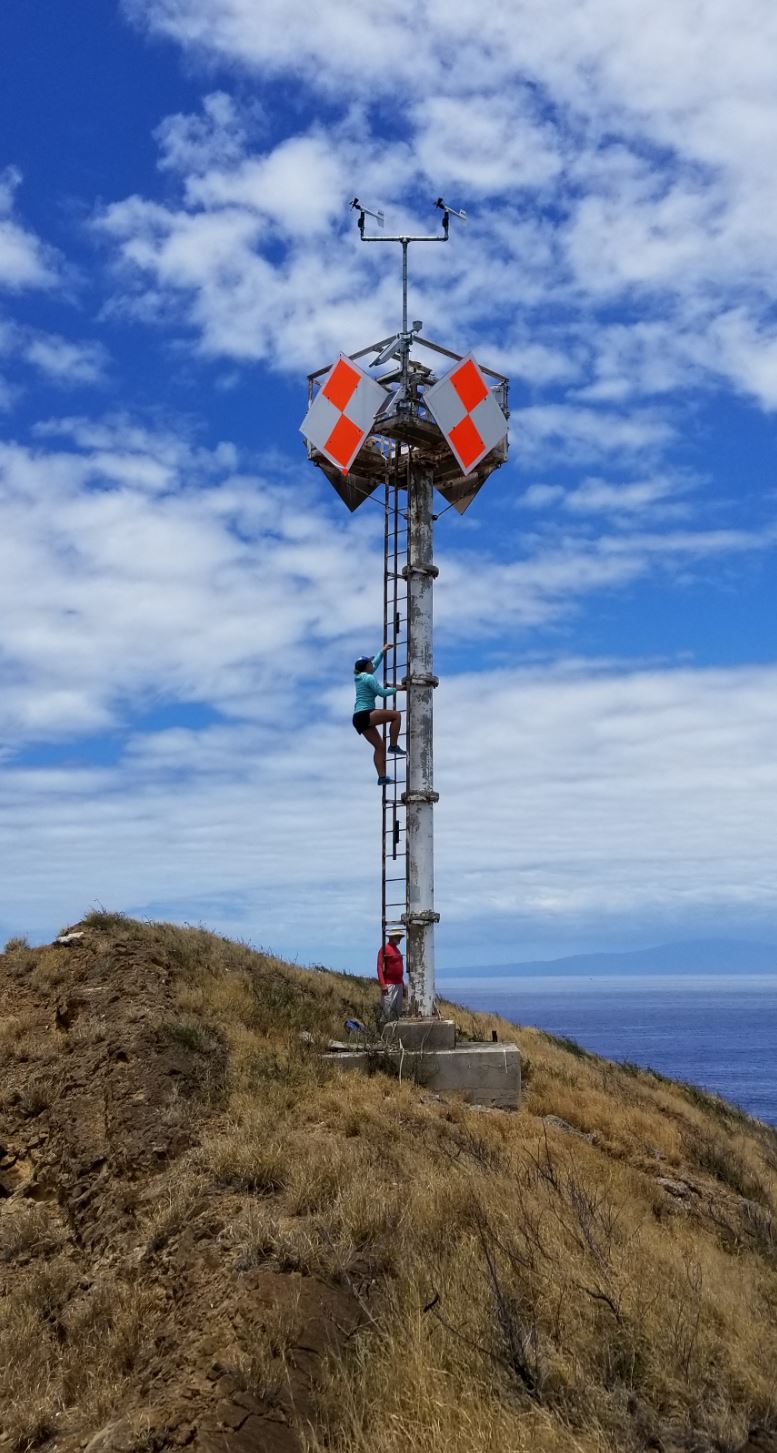Poquoson, VA – In the never-ending quest by WeatherFlow to give its clients all the pertinent wind and weather and water information possible to make their next boating, sailing, kiting, or fishing session the best ever, WeatherFlow would like to announce the installation of several new sites that truly span the widening domain of WeatherFlow’s national network.

Later, a new location was added at Lynnhaven Inlet Light (shown left) in the Virginia Hampton Roads area. It is essentially a replacement for the former site at Lynnhaven Pier. The Pier site collected data for almost 20 years, and survived numerous tropical systems, including Hurricane Isabel. The new site should continue to provide useful information for vessels that run the gamut in size from aircraft carriers to windsurfers.
A new weather station was also installed at Lake Elsinore in California. Though far from seeing commercial freighters, this lake will likely see winds of equal strength or greater to Lynnhaven despite the fact that this lake is quite a distance from the coast where afternoon sea breezes are the norm. Almost every summer afternoon, a reliable breeze sweeps across the lake bringing smiles to kiteboarders who make the trek from places all over Riverside, San Diego, and Orange Counties and beyond. This site will help locals, including the National Weather Service, learn more about 
Most recently, Molokini Light (shown left) off of Maui, Hawaii is WeatherFlow’s first site in Hawaii that benefits from the long, healthy relationship between Weatherflow and the United States Coast Guard. The Memorandum of Agreement, now in its 11th year, has been highly successful for both parties. WeatherFlow is able to place wind and weather collection sensors in locations right over the water. Advances in both the limitation of power consumption and constantly improving communications have allowed the placement of equipment directly on aids to navigation, right at locations of high boat traffic, both professional and recreational. Divers and snorkelers will enjoy learning about wind and weather behavior at this famous dive location, allowing them to safely enjoy the perfect dive. This information is also now available for the United States Coast Guard to optimize their mission objectives through improved situational awareness.
For more information about WeatherFlow’s observing network, Contact Us.